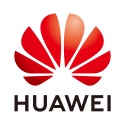June 18, 2021

The sudden outbreak of the coronavirus wreaked havoc in 2020. In the extensive response to this crisis, 5G smart healthcare showed its remarkable capacity to stem the spread of the virus and bring our daily lives and industrial production back to normal.
As one of the first hospitals to run 5G network pilots, the China-Japan Friendship Hospital was the first to deploy 5G digital indoor networks of China Telecom, China Mobile, and China Unicom, laying a solid foundation for exploration into and application of 5G telemedicine services.
The China-Japan Friendship Hospital has been leveraging 5G to provide cloud visits and other patient services as well as assisting more than 5,000 hospitals across China through remote healthcare. Its 5G remote consultation system has been used by many hospitals to conduct remote consultations, CT examinations, and type-B ultrasounds, helping them treat COVID-19 patients more efficiently.
Application 1: 5G Digital Auscultation
Digital stethoscopes are used to collect the sounds with lossless fidelity and send them in real time over 5G channels to the platform completely and accurately with a low latency and high reliability. Based on the analysis of collected sounds, the platform provides visualized results in the form of pulmonary sound spectrum charts, waveform charts, 3D spectrum charts, and tables with diagnosis indicators, as well as diagnosis results.
In the early response to combat the virus, Huang Ke, a doctor from the emergency medical team of the China-Japan Friendship Hospital in Hubei, used 5G digital auscultation to jointly diagnose ICU patients with off-site specialists. This is an example of how 5G enables doctors, even when they are wearing thick protective suits or unable to enter quarantined wards, to continue to diagnose and treat patients with digital auscultation. 5G digital auscultation provides specialists with a powerful tool to listen to the pulmonary sounds of patients in severe or critical condition accurately, completely, and in real time. Now, digital auscultation applications have been included in a fifth version of the emergent medical equipment catalog for COVID-19 prevention and control.
Application 2: Ultrasonic Needle Knife + 5G Mobile Video Cart
In 2005, the China-Japan Friendship Hospital introduced ultrasound to needle-knife operations, opening a new era of visualized needle-knife procedures. To date, this technology has been widely used in practices by around 500,000 doctors in more than 20 provinces and cities in China. The rapidly developing 5G technology serves as a significant boost to expand this visualized needle-knife technology. In 2020, minimally invasive medical procedures based on needle-knife saw extensive application, particularly in the course of containing COVID-19. Furthermore, its development acts to promote the modernization of traditional Chinese medicine (TCM).
Application 3: 5G Remote Ultrasonic Diagnosis
In China, there are only 200,000 ultrasound doctors, most of who work in primary hospitals. This shortage of experienced doctors is often attributed to a considerable portion of erroneous or failed diagnosis. 5G provides an ideal solution to the shortage by providing ultrasound instruments in areas such as bedsides, operating rooms, and ICU wards to connect to telemedicine platforms. As such, doctors at primary hospitals can conveniently receive guidance and training from specialists at larger hospitals to improve their diagnoses. This will be essential if the medical industry is to address the huge shortage of ultrasound doctors.
The China-Japan Friendship Hospital has set up an ultrasound lab. 5G equipment has already been applied to its ultrasound instruments to establish reliable connections between the ultrasound department and other departments within the hospital as well as various primary hospitals in other locations. Remote imaging consultation has also played a crucial role in combating the pandemic.
Application 4: 5G Pathological Diagnosis
5G pathological diagnosis has now become a vital assistant to frozen section consultation, which is a time-critical medical examination. A general frozen section consultation usually needs to be completed in half an hour, and after a section is sliced, doctors normally have only 10 minutes to complete the diagnosis. A sliced section is digitally scanned so that it can be sent for further analysis, and the data to be sent depends on specific tissues involved. Given a 40-fold magnification, 2 to 3 GB of data needs to be transmitted per slice. To transfer this amount of data in such a short period poses a high requirement on networks.
Notably, in August 2020, China's top health regulatory body launched a standardization project, requesting the China-Japan Friendship Hospital to lead research that standardizes 5G application in the medical industry. Other major participants include major hospitals, research institutes, and leading 5G players. This will enable China to build 5G medical networks against unified standards to foster 5G medical innovation, standardize the development of 5G medical terminals, and develop more valuable applications, further consolidating the infrastructure of smart hospitals.
This content is sponsored by Huawei.
Huawei Technologies Co. Ltd
You May Also Like









